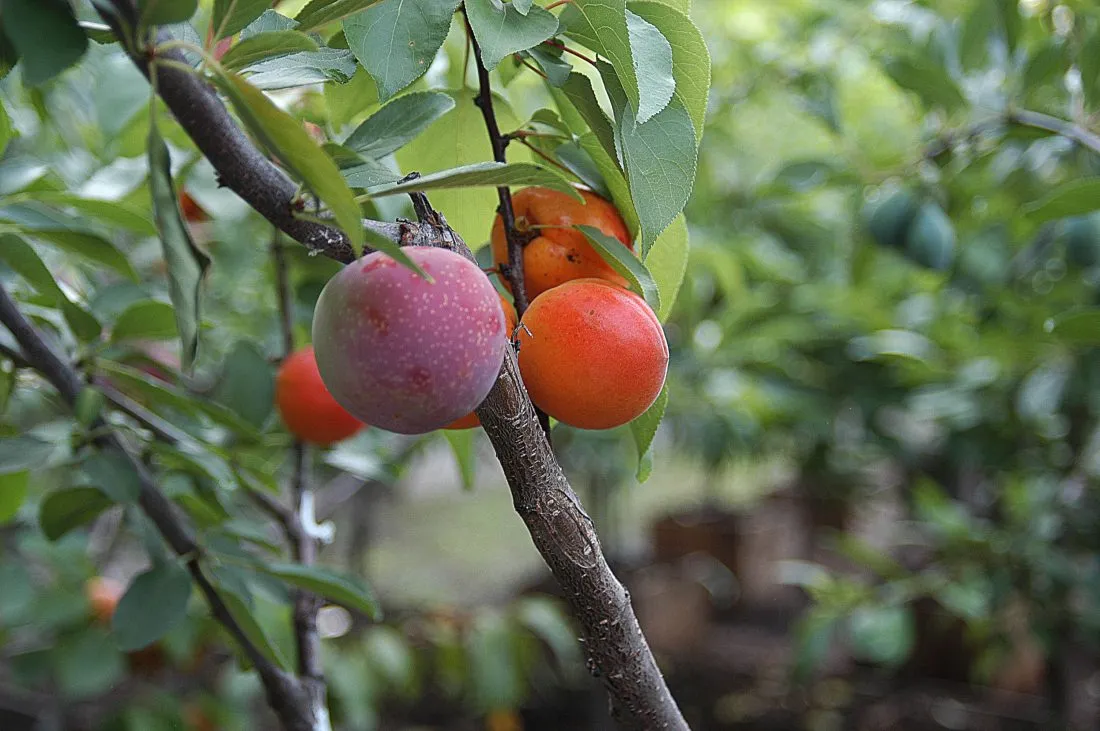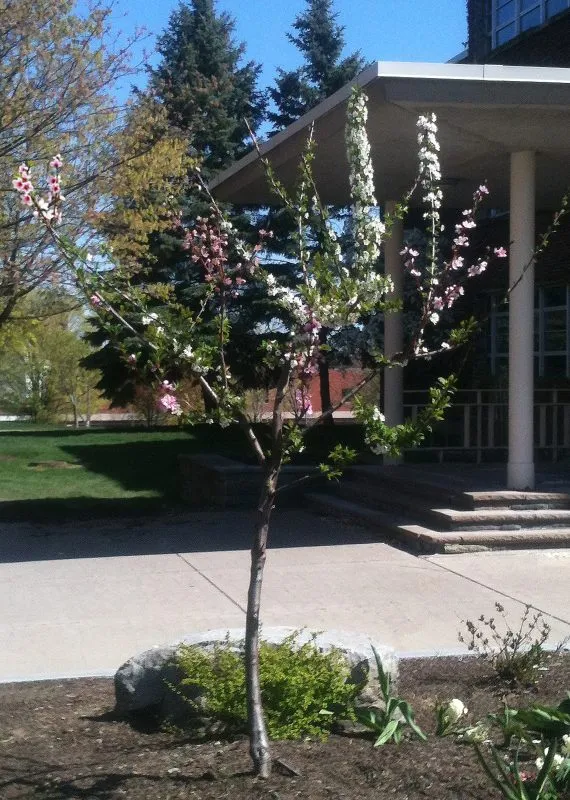
But when spring finds its way to Central New York, something magical happens. For starters, it blossoms, which on the heels of a Syracuse winter can seem miraculous enough. This unusual tree, however, really puts on a lavish spectacle—blossoming in several variegated shades of pink and white all at the same time. Come summer, it does some more showing off, bursting forth with an abundance of fruit, also in many varieties. And when it reaches full maturity, it will have the capacity to grow some 40 different kinds of stone fruit—plums, peaches, apricots, nectarines, cherries, and almonds.
Sounds a bit like a Disney fantasy, but thanks to the labors and ingenuity of sculptor and art professor Sam Van Aken, the Tree of 40 Fruit is real, thriving, and setting down roots at locations across the country. The one on campus was the first of its kind, created in 2008 and dedicated in 2011 during a University 9/11 remembrance event as a symbol of acceptance and dialogue across differences. Several other trees, many of them donated, have been placed with art collectors, with individuals, or in museums and public settings, including a grove of six trees planted in Portland, Maine, in spring 2014. “The Tree of 40 Fruit really started as an artwork,” says Van Aken, who chose the number 40 for its historical and biblical significance as an amount that points to the infinite. “I wanted to make this tree that would blossom in different colors and bear different types of fruit, so that when you’d happen upon it, it would cause this moment of rethinking that hopefully becomes the beginning of a story.”

The first of its kind, this Tree of 40 Fruit brings its unique beauty to campus each spring.
Each tree is created through grafting, a process that has intrigued Van Aken since he witnessed it as a child growing up on a farm in Pennsylvania. “I just thought it was the most fascinating thing in the world—taking the branch of a tree, sticking it onto another tree, and watching it grow,” he says. “It is like Dr. Seuss and Frankenstein and all those amazing things you think of when you’re a kid.” It wasn’t until many years later, though, that Van Aken started “playing around” with the idea of grafting as a means of making art, first combining pieces of plastic fruit to create hybrids and then moving on to work with real vegetables and, ultimately, trees.
To start the Tree of 40 Fruit project, Van Aken scoured New York State in search of varieties of stone fruit, a species that offers up the most diversity. This proved difficult, since the majority of stone fruits are now grown in California. He was eventually able to lease an heirloom orchard with grants he obtained from the University and Creative Capital. “It turns out that Central New York was one of the largest producers of stone fruits—particularly plums—in the 19th century,” he says. “And this one orchard in particular contained all the heirloom, native, hybrid, and antique varieties from this agricultural industry.”
From that orchard, Van Aken developed dwarf stock trees for each variety, growing them in an outdoor nursery next to the Comstock Art Facility on campus. The nursery now serves year-round as a kind of mad-scientist laboratory where Van Aken does the grafting and his “inventions” come to life. “I start each tree of 40 fruit as root stock, taking one of the varieties from a stock tree and putting it onto a root structure,” says Van Aken, who works with more than 250 varieties of stone fruit in creating the trees. “After two years, it is pruned back to an open-centered vase shape with four or five primary branches.” The grafting process he uses, called chip grafting, involves taking a sliver that includes the bud from one of the stock trees and inserting it into a like-size incision in the working tree. “I tape it, let it sit and heal in all winter, and then I prune it back and hope that it grows,” he says.
For me, there’s much more power in a metaphor than there is in a technology.
What began as an artwork has blossomed into much more for Van Aken, branching out to become both a research project chronicling the timing of when different varieties blossom in relationship to each other, and a form of conservation. “By taking all these species and grafting them onto the trees of 40 fruit, and then placing them throughout the country, in a way I am creating my own type of diversity and preservation,” he says.
Regardless of the diverse areas of interest he feels called to pursue, Van Aken says, creative impulse remains at the heart of all he does. “For me, there’s much more power in a metaphor than there is in a technology,” he says. “And that’s why these things always remain artwork for me—first and foremost.”


